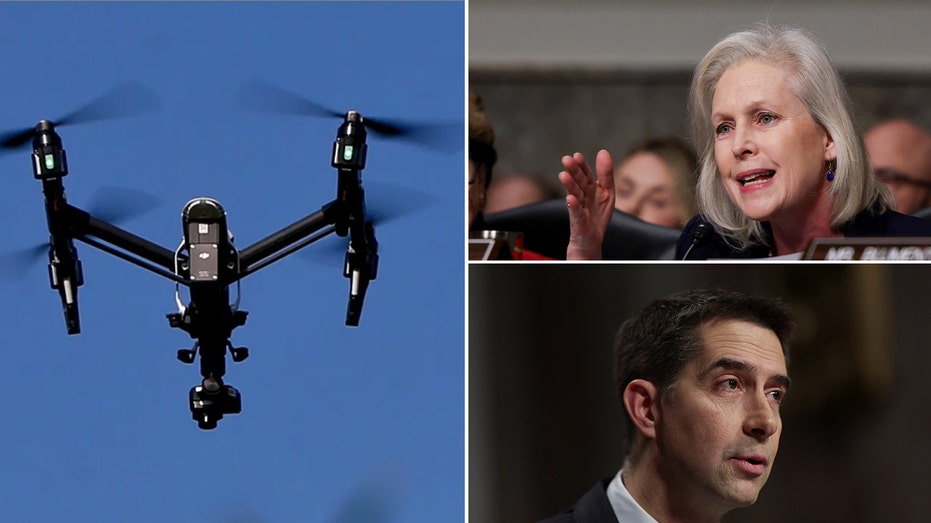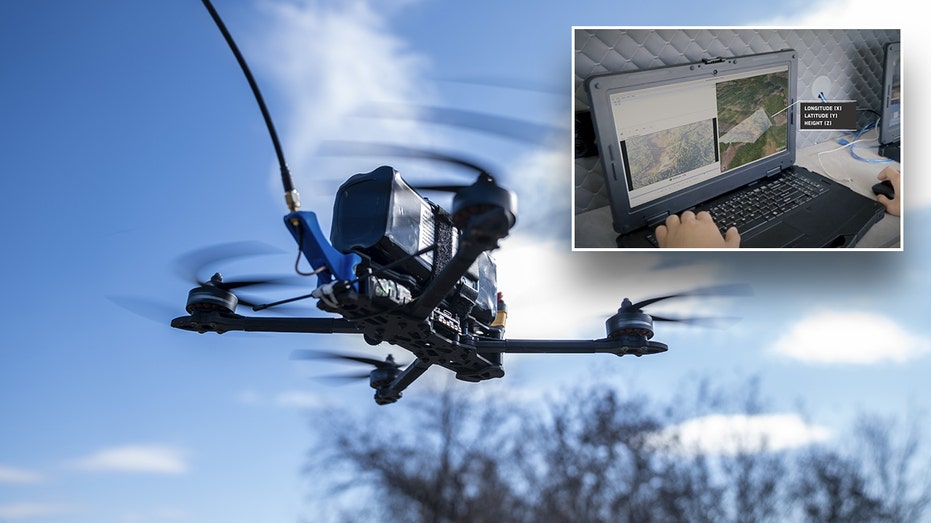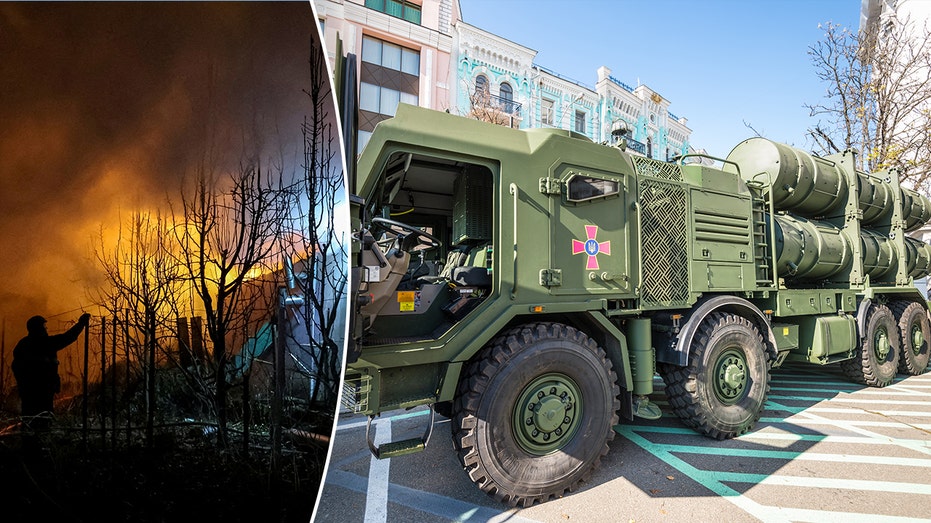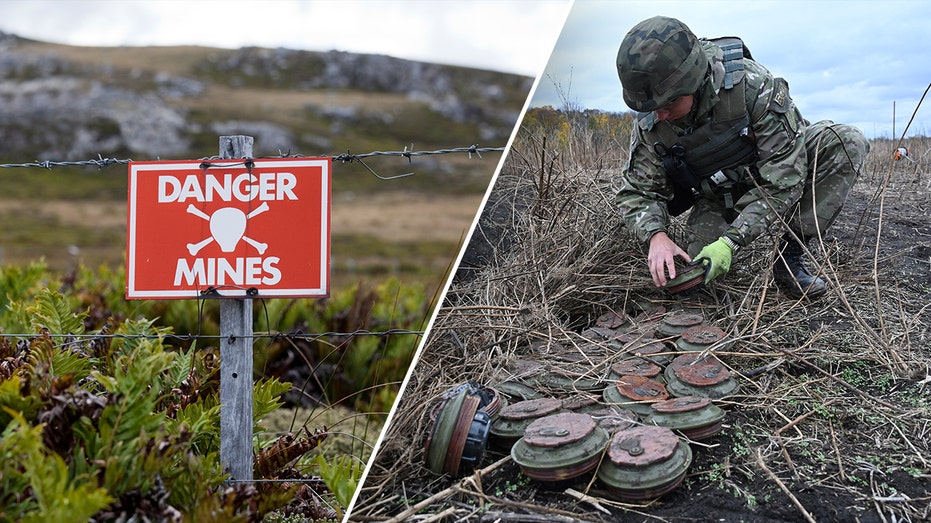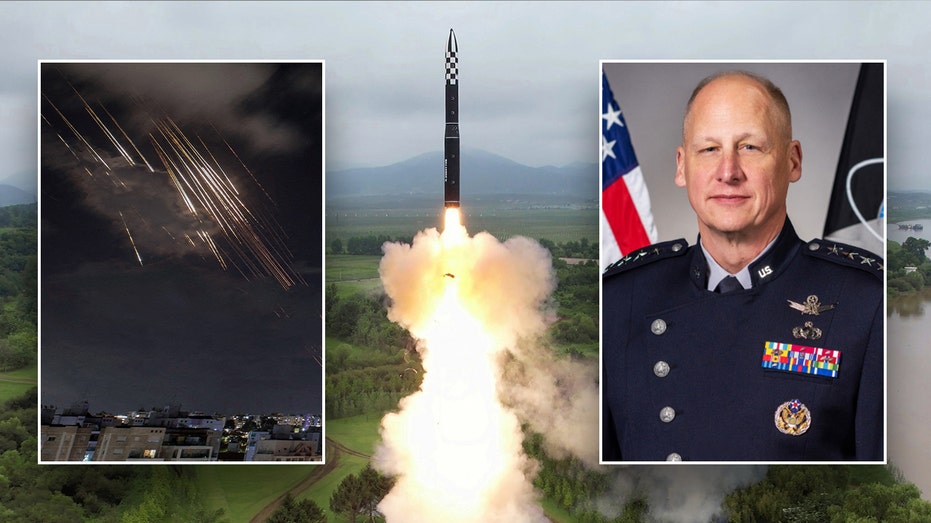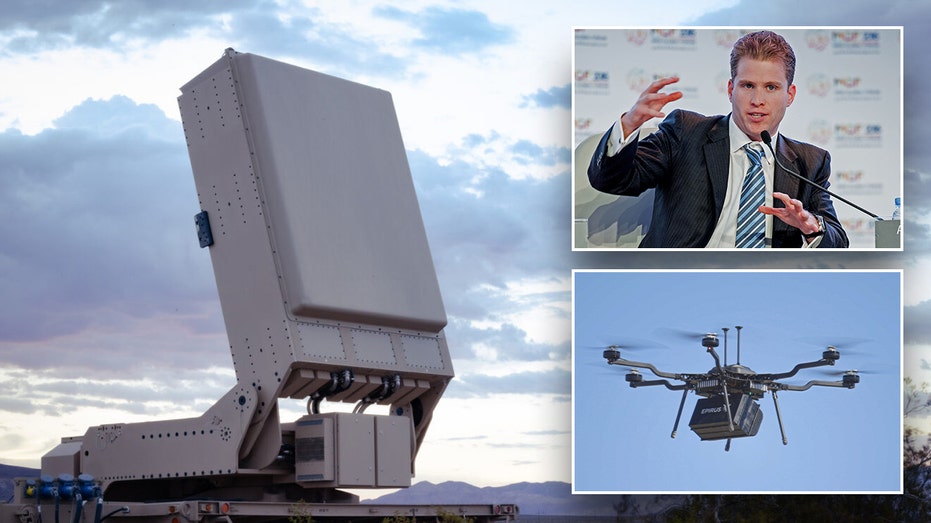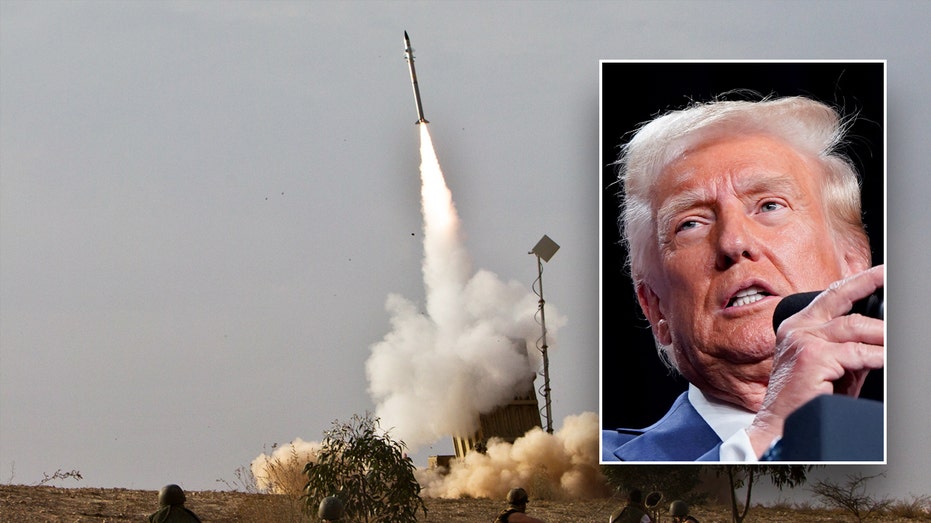US military would be unleashed on enemy drones on the homeland if bipartisan bill passes
FIRST ON FOX: Dozens of drones that traipsed over Langley Air Force base in late 2023 revealed an astonishing oversight: Military officials did not believe they had the authority to shoot down the unmanned vehicles over the U.S. homeland.
A new bipartisan bill, known as the COUNTER Act, seeks to rectify that, offering more bases the opportunity to become a "covered facility," or one that has the authority to shoot down drones that encroach on their airspace.
The new bill has broad bipartisan and bicameral support, giving it a greater chance of becoming law. It’s led by Armed Services Committee members Tom Cotton, R-Ark., and Kirsten Gillibrand, D-N.Y., in the Senate, and companion legislation is being introduced by August Pfluger, R-Texas, and Chrissy Houlahan, D-Pa., in the House.
Currently, only half of the 360 domestic U.S. bases are considered "covered facilities" that are allowed to engage with unidentified drones. The legislation expands the narrow definition of a covered facility under current statute to allow all military facilities that have a well-defined perimeter to apply for approval that allows them to engage with drones.
PENTAGON LACKS COUNTER-DRONE PROCEDURE LEADING TO INCURSIONS LIKE AT LANGLEY, EXPERTS SAY
The legislation also stipulates that the secretary of defense delegate authority to combatant commanders to engage drone attacks, cutting down on time to get approval through the chain of command in emergency situations.
"Leaving American military facilities vulnerable to drone incursions puts our service members, the general public and our national security at risk," Cotton said.
For more than two weeks in December 2023, a swarm of mystery drones flew into restricted airspace over Langley, home to key national security facilities and the F-22 Raptor stealth fighters.
Lack of a standard protocol for such incursions left Langley officials unsure of what to do, other than allow the 20-foot-long drones to hover near their classified facilities.
To this day, the Pentagon has said little about the incidents, other than to confirm that they occurred. Whether it knows where the drones came from or what they were doing is unclear.
"As commercial drones become more commonplace, we must ensure that they are not being used to share sensitive information with our adversaries, to conduct attacks against our service members, or otherwise pose a threat to our national security," Gillibrand said.
PLANES, STARS AND HOBBYISTS: LAWMAKERS INSIST NOTHING ‘NEFARIOUS’ IS HAPPENING IN NJ SKIES
As defense-minded lawmakers sought more answers, Langley officials referred them to the FBI, who referred them to Northern Command, who referred them to local law enforcement, a congressional source told Fox News Digital last year.
Gen. Gregory Guillot, chief of Northern Command (NORCOM) and North American Aerospace Defense Command (NORAD), said in February that there were over 350 unauthorized drone detections over military bases last year.
"The primary threat I see for them in the way they’ve been operating is detection and perhaps surveillance of sensitive capabilities on our installations," he said during a Senate Armed Services Committee hearing. "There were 350 detections reported last year on military installations, and that was 350 over a total of 100 different installations of all types and levels of security."
A surge in mysterious drone activity over New Jersey late last year and early this year prompted mass confusion.
Guillot said that regulations on UAV countermeasures created "significant vulnerabilities that have been exploited by known and unknown actors."
He advocated for what the new legislation would do: expand Section 130i of Title 10, which pertains to the protection of "certain facilities and assets from unmanned aircraft."
"I would propose and advocate for expansion of 130i [authorities] to include all military installations, not just covered installations," Guillot said during the hearing. "I’d also like to see the range expanded to slightly beyond the installation, so they don’t have to wait for the threat to get over the installation before they can address it, because many of these systems can use side looking or slant range, and so they could … surveil the base from outside the perimeter. And under the current authorities, we can’t address that."

